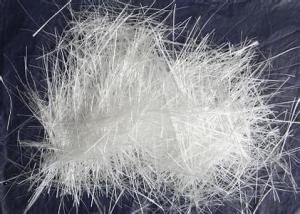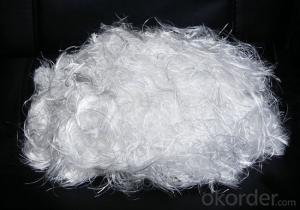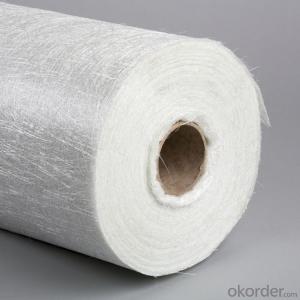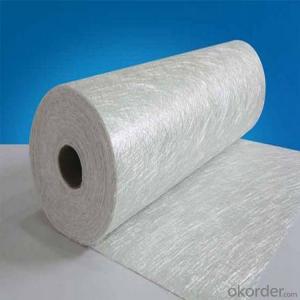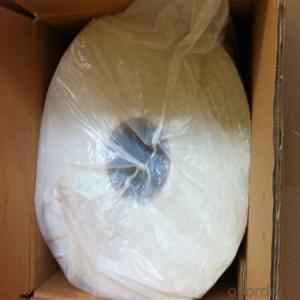Fiber Glass Chopped Strands For Thermoplastics
- Loading Port:
- China Main Port
- Payment Terms:
- TT or LC
- Min Order Qty:
- 20000 kg
- Supply Capability:
- 200000Kg Per Month kg/month
OKorder Service Pledge
OKorder Financial Service
You Might Also Like
1.Brief Introduction
Chopped Stands for Thermoplastic are based on silane coupling agent and special sizing formulation, compatible with PA,PBT/PET, PP, AS/ABS, PC, PPS/PPO,POM, LCP;
E-Glass Chopped Stands for thermoplastic are know for excellent strand integrity, superior flowability and processing property, delivering excellent mechanical property and high surface quality to its finished product.
2.Product Features
Extremely low resin demand, delivering low viscosity to BMC paste
High impact strength; High LOI rate
High strand stiffness; Compatible with rubber
3.Product Specifications
Property | Fibre diameter | Moisture Content | Size Content | Chop |
(%) | (%) | (%) | (%) | |
Mathods | IS01888 | ISO3344 | ISO1887 | |
3mm | ±10 | ≤3.0 | 0.1±0.05 | 98 |
6mm | ||||
9mm | ||||
12mm |
Special specification can be produce according to customer requirements.
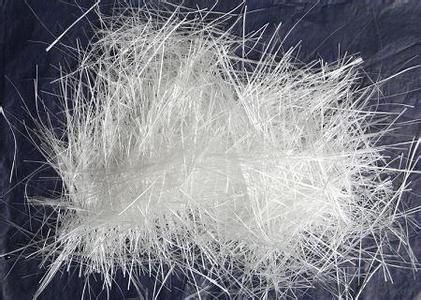
4.FAQ
Packaging:
Each bag can be taken (15-25kgs)。 Could also take a big container bag.
Storage:
Unless otherwise specified, It should be stored in a dry, cool and rain-proof area. It is recommended that the room temperature and humidity should be always maintained at 15℃~35℃ and 35%~65% respectively.
- Q:How does the tensile strength of the chopped strand affect its performance?
- The tensile strength of a chopped strand directly affects its performance in various applications. Tensile strength is a measure of the maximum amount of tensile stress a material can withstand before breaking or fracturing. In the context of chopped strands, which are short, discrete fibers, the tensile strength determines their ability to resist pulling or stretching forces. A higher tensile strength in chopped strands generally leads to improved performance in several ways. Firstly, it enhances the overall strength and structural integrity of composite materials when these chopped strands are incorporated into them. Composite materials, such as fiberglass composites, rely on the reinforcement provided by chopped strands to improve their mechanical properties, including tensile strength. Higher tensile strength chopped strands allow for greater load-bearing capacity and resistance to deformation or failure. Secondly, a higher tensile strength in chopped strands enhances their ability to withstand external forces and extreme environmental conditions. This is particularly important in applications where the chopped strands are exposed to constant stress, such as in automotive parts, aerospace components, or infrastructure materials. The higher tensile strength allows for increased durability and longevity, reducing the likelihood of premature failure or damage. Moreover, the tensile strength of chopped strands also affects their processability and handling characteristics. Higher tensile strength chopped strands are less prone to breakage or fiber pull-out during handling, cutting, mixing, or molding processes. This improves the overall efficiency and quality of manufacturing operations, reducing waste and ensuring consistent performance in the final product. In summary, the tensile strength of chopped strands plays a crucial role in their performance. Higher tensile strength chopped strands offer improved strength, durability, and processability, making them more suitable for demanding applications where structural integrity and long-term performance are essential.
- Q:Is fiberglass chopped strand suitable for the production of automotive components?
- Yes, fiberglass chopped strand is suitable for the production of automotive components. Fiberglass chopped strand is a type of reinforcement material used in composite materials, and it offers several benefits that make it suitable for automotive applications. Firstly, fiberglass chopped strand provides excellent strength and stiffness properties, which are important for automotive components that need to withstand various loads and vibrations. It has a high tensile strength and can enhance the structural integrity of the components, making it a reliable choice for automotive manufacturers. Secondly, fiberglass chopped strand is lightweight, which is crucial for automotive applications where reducing the overall weight of the vehicle is a priority. The use of lightweight materials can contribute to fuel efficiency and improve the performance of the vehicle. Additionally, fiberglass chopped strand offers good resistance to corrosion, chemicals, and temperature variations, making it suitable for automotive components that are exposed to harsh environments. It also has good electrical insulation properties, which can be advantageous for components that require electrical conductivity or insulation. Moreover, fiberglass chopped strand is cost-effective compared to other materials like carbon fiber, while still offering good mechanical properties. This makes it an attractive option for automotive manufacturers who are looking to balance performance and cost. Overall, fiberglass chopped strand is a suitable material for the production of automotive components due to its strength, lightweight nature, resistance to corrosion, and cost-effectiveness. Its properties make it a reliable choice for various applications in the automotive industry.
- Q:What is the tensile strength of fiberglass chopped strand?
- The tensile strength of fiberglass chopped strand can vary depending on the specific type and manufacturer. On average, however, fiberglass chopped strand has a tensile strength ranging from 200 MPa to 800 MPa. This means that it can withstand a considerable amount of pulling force before breaking or fracturing. The actual tensile strength may also be influenced by other factors such as the length and orientation of the fibers, the resin used to bind them, and the manufacturing process. It is always recommended to consult the datasheet or technical specifications provided by the manufacturer for accurate and specific information regarding the tensile strength of a particular fiberglass chopped strand product.
- Q:What are the environmental impacts of using fiberglass chopped strand?
- The use of fiberglass chopped strand can have both positive and negative environmental impacts. On the positive side, fiberglass is a highly durable material that can be used in a variety of applications, such as construction and manufacturing. Its strength-to-weight ratio makes it an efficient alternative to other materials, reducing the overall amount of material required and potentially lowering energy consumption during production and transportation. However, the production and disposal of fiberglass chopped strand also have several negative environmental impacts. Firstly, the manufacturing process of fiberglass involves the extraction and processing of raw materials, such as silica sand, limestone, and soda ash. These processes can have significant energy requirements and can contribute to air and water pollution, as well as habitat destruction in the areas where these materials are sourced. Additionally, the production of fiberglass involves the use of chemicals, such as resins and binders, which can be hazardous to human health and the environment if not handled properly. The release of these chemicals during manufacturing or disposal can contaminate air, water, and soil, impacting ecosystems and potentially posing health risks to both humans and wildlife. Furthermore, fiberglass is not biodegradable, meaning that once it reaches the end of its useful life, it can contribute to landfill waste or require energy-intensive recycling processes. Improper disposal of fiberglass can lead to environmental pollution and long-term accumulation of non-biodegradable waste. To mitigate these environmental impacts, it is crucial to incorporate sustainable practices throughout the lifecycle of fiberglass chopped strand. This can include using recycled or eco-friendly materials in production, implementing proper waste management and recycling programs, and adopting energy-efficient manufacturing processes. Additionally, it is important to properly handle and dispose of fiberglass waste to prevent its release into the environment. Overall, while fiberglass chopped strand offers certain benefits, it is essential to consider and address its environmental impacts to ensure a more sustainable and responsible use of this material.
- Q:Can fiberglass chopped strand be used in medical applications?
- Yes, fiberglass chopped strand can be used in certain medical applications. It is commonly used as a reinforcing material in composites used for medical devices such as prosthetics, orthopedic implants, and surgical instruments. However, its specific use will depend on the requirements and regulations of each individual medical application.
- Q:What are the different certifications and standards applicable to fiberglass chopped strand?
- There are several certifications and standards that are applicable to fiberglass chopped strand. Some of the most commonly recognized ones include ISO 9001:2015 for quality management systems, ISO 14001:2015 for environmental management systems, and ISO 45001:2018 for occupational health and safety management systems. Additionally, there are specific industry standards like ASTM D578-98 for glass fiber strands, ASTM D2584-09 for chopped glass fiber reinforcement, and ASTM D265-10 for impact resistance of rigid plastics. These certifications and standards ensure that fiberglass chopped strand manufacturers adhere to specific guidelines and meet the required quality, environmental, and safety standards.
- Q:Does fiberglass chopped strand improve the vibration damping properties of composite materials?
- Yes, the vibration damping properties of composite materials can be improved by using fiberglass chopped strand. Fiberglass possesses inherent damping properties because of its viscoelastic nature, enabling it to absorb and dissipate energy during vibrations. When utilized as a reinforcement in composite materials, the fiberglass chopped strand enhances the overall damping characteristics of the composites. The dispersion of chopped strands throughout the composite matrix, facilitated by their random orientation and short length, results in the creation of an interlocking network. This network aids in the dissipation of vibration energy by hindering the propagation of vibration waves, thereby reducing their amplitude and frequency. Consequently, the composite material exhibits enhanced vibration damping properties. Moreover, the high strength and stiffness of fiberglass contribute significantly to the overall performance of the composite material. By reinforcing the matrix, the fiberglass chopped strand increases the rigidity of the composite, minimizing the magnitude of vibrations. This combination of damping and reinforcement properties makes fiberglass chopped strand an ideal choice for applications requiring vibration damping. It should be noted that the specific improvement in vibration damping properties may vary depending on the composition and design of the composite material, as well as the amount and distribution of the fiberglass chopped strand. Proper selection and incorporation of the chopped strand are vital for achieving the desired vibration damping characteristics in composite materials.
- Q:How does the flexural strength of the chopped strand affect its performance?
- Determining the overall performance of a chopped strand heavily relies on its flexural strength. Flexural strength, in essence, denotes a material's ability to withstand deformation when subjected to bending or flexing forces. A chopped strand with a greater flexural strength signifies enhanced resistance against bending and flexing. Consequently, it becomes more durable and less prone to breakage or deformation under load. This becomes especially crucial in scenarios where the chopped strand encounters bending or flexing forces, as seen in composite material construction or reinforced concrete. Furthermore, the flexural strength of a chopped strand affects its capability to transfer and distribute stress or load throughout a structure. A higher flexural strength enables efficient distribution of the applied load, reducing the risk of localized stress concentrations and potential failure. Additionally, the chopped strand's flexural strength directly influences its mechanical properties, including stiffness and toughness. A higher flexural strength translates to a stiffer and tougher material, thereby providing superior structural integrity and resistance against external forces. To summarize, the flexural strength of a chopped strand has a significant impact on its performance. A higher flexural strength leads to improved durability, load-bearing capacity, and structural integrity, making it an attractive choice for various applications where bending or flexing forces are present.
- Q:Is fiberglass chopped strand suitable for water treatment applications?
- Yes, fiberglass chopped strand is suitable for water treatment applications. Its high strength and corrosion resistance make it an ideal material for constructing water treatment tanks, pipes, and other equipment that come into contact with water. Additionally, fiberglass chopped strand is non-toxic and does not leach any harmful substances into the water, making it a safe choice for water treatment applications.
- Q:How does the moisture absorption of chopped strand affect its performance?
- The moisture absorption of chopped strand can significantly affect its performance. Chopped strand is typically made of glass fibers that are cut into short lengths. These fibers are often used as a reinforcement material in various composite applications, such as plastics, concrete, and fiberglass. When chopped strand absorbs moisture, it can negatively impact its mechanical properties. Moisture can degrade the integrity of the glass fibers, causing them to weaken and become brittle. This can result in a loss of tensile strength, stiffness, and overall durability of the composite material. Moisture in chopped strand can also lead to dimensional instability. As the fibers absorb water, they may expand, causing the composite to swell or warp. This can affect the dimensional accuracy and stability of the final product, making it less suitable for applications that require precise measurements or tight tolerances. Furthermore, moisture absorption can also promote the growth of microorganisms, such as mold or bacteria, within the composite material. This can compromise its structural integrity and lead to degradation over time. To mitigate these issues, manufacturers often take steps to minimize moisture absorption in chopped strand. This can include applying surface treatments or coatings to the fibers to make them more hydrophobic or incorporating moisture-resistant additives into the composite matrix. Proper handling, storage, and transportation practices are also crucial in preventing moisture absorption in chopped strand. In summary, the moisture absorption of chopped strand can have a significant impact on its performance. It can lead to decreased mechanical properties, dimensional instability, and potential degradation due to microbial growth. Therefore, it is essential to consider the moisture resistance and management of chopped strand when selecting and utilizing it in composite applications.
1. Manufacturer Overview |
|
|---|---|
| Location | |
| Year Established | |
| Annual Output Value | |
| Main Markets | |
| Company Certifications | |
2. Manufacturer Certificates |
|
|---|---|
| a) Certification Name | |
| Range | |
| Reference | |
| Validity Period | |
3. Manufacturer Capability |
|
|---|---|
| a)Trade Capacity | |
| Nearest Port | |
| Export Percentage | |
| No.of Employees in Trade Department | |
| Language Spoken: | |
| b)Factory Information | |
| Factory Size: | |
| No. of Production Lines | |
| Contract Manufacturing | |
| Product Price Range | |
Send your message to us
Fiber Glass Chopped Strands For Thermoplastics
- Loading Port:
- China Main Port
- Payment Terms:
- TT or LC
- Min Order Qty:
- 20000 kg
- Supply Capability:
- 200000Kg Per Month kg/month
OKorder Service Pledge
OKorder Financial Service
Similar products
New products
Hot products
Related keywords


